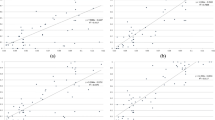Abstract
The power to separate the variance of a quantitative trait locus (QTL) from the polygenic variance is determined by the variability of genes identical by descent (IBD) at the QTL. This variability may increase with inbreeding. Selfing, the most extreme form of inbreeding, increases the variability of the IBD value shared by siblings, and thus has a higher efficiency for QTL mapping than random mating. In self-incompatible organisms, sib mating is the closest form of inbreeding. Similar to selfing, sib mating may also increase the power of QTL detection relative to random mating. In this study, we develop an IBD-based method under sib mating designs for QTL mapping. The efficiency of sib mating is then compared with random mating. Monte Carlo simulations show that sib mating designs notably increase the power for QTL detection. When power is intermediate, the power to detect a QTL using full-sib mating is, on average, 7% higher than under random mating. In addition, the IBD-based method proposed in this paper can be used to combine data from multiple families. As a result, the estimated QTL parameters can be applied to a wide statistical inference space relating to the entire reference population.
Similar content being viewed by others
References
Amos, C.I., 1994. Robust variance-components approach for assessing genetic linkage in pedigrees. Am. J. Hum. Genet. 54: 535-543.
Beckmann, J.S. & M. Soller, 1988. Detection of linkage between marker loci and loci affecting quantitative traits in crosses between segregating populations. Theor. Appl. Genet. 76: 228-236.
Cockerham, C.C., 1983. Covariances of relatives from selffertilization. Crop Sci. 23: 1177-1180.
Fulker, D.W., S.S. Cherny & L.R. Cardon, 1995. Multipoint interval mapping of quantitative trait loci using sib pairs. Am. J. Hum. Genet. 56: 1224-1233.
Gessler, D.D.G. & S. Xu, 1996. Using the expectation or the distribution of the identity by descent for mapping quantitative trait loci under the random model. Am. J. Hum. Genet. 59: 1382-1390.
Goldgar, D.E., 1990. Multipoint analysis of human quantitative genetic variation. Am. J. Hum. Genet. 47: 957-967.
Götz, K.U. & L. Ollivier, 1992. Theoretical aspects of applying sibpair linkage to livestock species. Genet. Sel. Evol. 24: 29-42.
Guo, S.W., 1994. Computation of identity-by-descent proportions shared by two siblings. Am. J. Hum. Genet. 54: 1104-1109.
Haldane, J.B.S., 1919. The combination of linkage values and the calculation of distance between the loci of linked factors. J. Genet. 8: 299-309.
Haley, C.S. & S.A. Knott, 1992. A simple regression method for mapping quantitative trait loci in line crosses using flanking markers. Heredity 69: 315-324.
Haley, C.S., S.A. Knott & J.M. Elsen, 1994. Mapping quantitative trait loci in crosses between outbred lines using least squares. Genetics 136: 1195-1207.
Harris, D.L., 1964. Genotypic covariances between inbred relatives. Genetics 50: 1319-1348.
Haseman, J.K. & R.C. Elston, 1972. The investigation of linkage between a quantitative trait and a marker locus. Behav. Genet. 2: 3-19
Jansen, R.C., 1993. Interval mapping of multiple quantitative trait loci. Genetics 135: 205-211
Kempthorne, O., 1955. The correlation between relatives in inbred populations. Genetics 40: 681-691.
Knott, S.A., J.M. Elsen & C.S. Haley, 1996. Methods for multiple-marker mapping of quantitative trait loci in half-sib populations. Theor. Appl. Genet. 93: 71-80.
Kruglyak, L. & E.S. Lander, 1995. Complete multipoint sib-pair analysis of qualitative and quantitative traits. Am. J. Hum. Genet. 57: 439-454.
Lander, E.S. & P. Green 1987. Construction of multilocus genetic linkage maps in humans. Proc. Natl. Acad. Sci. USA 84: 2363- 2367.
Lander, E.S. & D. Botstein, 1989. Mapping Mendelian factors underlying quantitative traits using RFLP linkage maps. Genetics 121: 185-199.
Martínez, O. & R.N. Curnow, 1992. Estimating the locations and the sizes of the effects of quantitative trait loci using flanking markers. Theor. Appl. Genet. 85: 480-488.
Muranty, H., 1996. Power of tests for quantitative trait loci detection using full-sib families in different schemes. Heredity 76: 156- 165.
Olson, J.M., 1995. Robust multipoint linkage analysis: an extension of the Haseman-Elston method. Genet. Epidemiol. 12: 177-193.
Rebai, A. & B. Goffinet, 1993. Power of tests for QTL detection using replicated progenies derived from a diallel cross. Theor. Appl. Genet. 86: 1014-1022.
Schork, N.J., 1993. Extended multipoint identity-by-descent analysis of human quantitative traits: efficiency, power, and modeling considerations. Am. J. Hum. Genet. 53: 1306-1319.
van der Beek, S., J.A.M. van Arendonk & A.F. Groen, 1995. Power of two-and three-generation QTL mapping experiments in an outbred population containing full-sib or half-sib families. Theor. Appl. Genet. 91: 1115-1124.
Wang, T., R.L. Fernando & S. van der Beek, 1995. Covariance between relatives for a marked quantitative trait locus. Genet. Sel. Evol. 27: 251-274.
Weller, J.I., Y. Kashi & M. Soller, 1990. Power of daughter and granddaughter designs for determining linkage between marker loci and quantitative loci in dairy cattle. J. Dairy Sci. 73: 2525- 2537.
Xie, C., D.D.G. Gessler & S. Xu, 1998. Combining Different Line Crosses for Mapping Quantitative Trait Loci Using the IBD-Based Variance Component Method. Genetics (In press)
Xu, S., 1996a, Mapping quantitative trait loci using four-way cross. Genet. Res. Camb. 68: 175-181.
Xu, S., 1996b, Computation of the full likelihood function for estimating variance at a quantitative trait locus. Genetics 144: 1951-1960.
Xu, S. & W.R. Atchley, 1995. A random model approach to interval mapping of quantitative trait loci. Genetics 141: 1189-1197.
Xu, S. & D.D.G. Gessler, 1998. Multipoint genetic mapping of quantitative trait loci using a variable number of sibs per family. Genet. Res. Camb. (In press)
Zeng, Z.B., 1994. Precision mapping of quantitative trait loci. Genetics 136: 1457-1468.
Author information
Authors and Affiliations
Rights and permissions
About this article
Cite this article
Xie, C., Gessler, D.D. & Xu, S. Sib mating designs for mapping quantitative trait loci. Genetica 104, 9–19 (1998). https://doi.org/10.1023/A:1003220609636
Issue Date:
DOI: https://doi.org/10.1023/A:1003220609636




